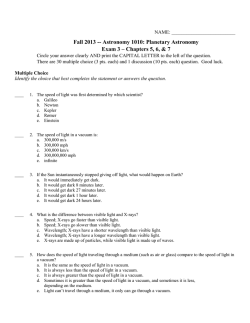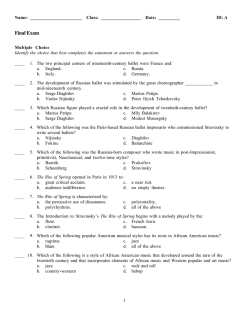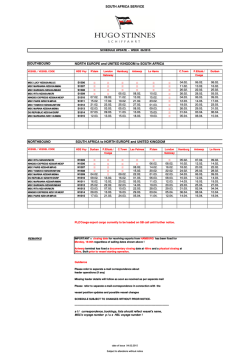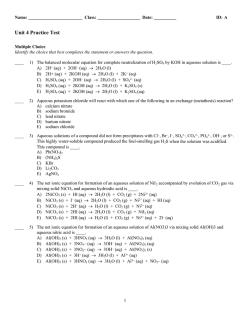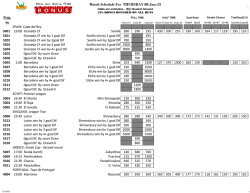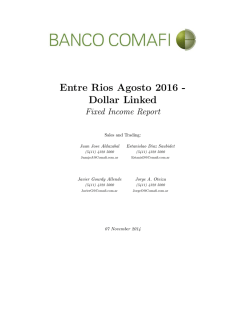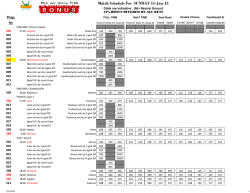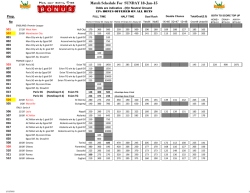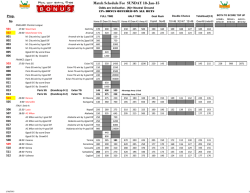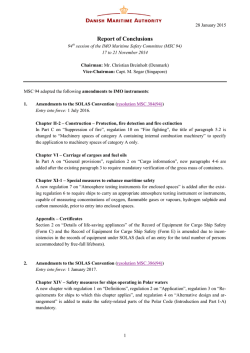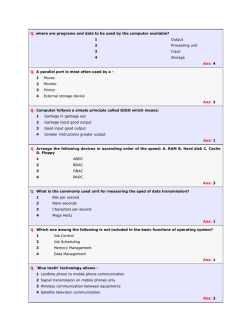
1A
Econ 2113 – Test #1A Name:________________________________ Dr. Rupp – Fall 2009 Pledge: “I have neither given or received aid on this exam”. Signature:________________________________ Multiple Choice Identify the letter of the choice that best completes the statement or answers the question. ____ ____ ____ ____ ____ ____ ____ ____ ____ 1. When a society cannot produce all the goods and services people wish to have, it is said that the economy is experiencing a. scarcity. b. shortages. c. inefficiencies. d. inequities. 2. The adage, "There is no such thing as a free lunch," means a. even people on welfare have to pay for food. b. the cost of living is always increasing. c. to get something we like, we usually have to give up another thing we like. d. all costs are included in the price of a product. 3. When the government attempts to improve equity in an economy the result is often a. an increase in overall output in the economy. b. additional government revenue since overall income will increase. c. a reduction in equity. d. a reduction in efficiency. 4. For most students, the largest single cost of a college education is a. the wages given up to attend school. b. tuition, fees, and books. c. room and board. d. transportation, parking, and entertainment. 5. Rational people make decisions at the margin by a. following marginal traditions. b. behaving in a random fashion. c. thinking in black-and-white terms. d. comparing marginal costs and marginal benefits. 6. If Japan chooses to engage in trade, it a. will only benefit if it trades with countries that produce goods Japan cannot produce. b. cannot benefit if it trades with less developed countries. c. should first attempt to produce the good itself. d. can benefit by trading with any other country. 7. Which of the following statements about markets is most accurate? a. Markets are usually a good way to organize economic activity. b. Markets are usually inferior to central planning as a way to organize economic activity. c. Markets fail and are therefore not an acceptable way to organize economic activity. d. Markets are a good way to organize economic activity in developed nations, but not in less developed nations. 8. The invisible hand's ability to coordinate the decisions of the firms and households in the economy can be hindered by a. government actions that distort prices. b. increased competition in markets. c. enforcement of property rights. d. too much attention paid to efficiency. 9. Causes of market failure include a. externalities and market power. b. market power and incorrect forecasts of consumer demand. c. externalities and foreign competition. d. incorrect forecasts of consumer demand and foreign competition. ____ 10. If a copper refinery does not bear the entire cost of the smoke it emits, it will a. not emit any smoke so as to avoid the entire cost of the smoke. b. emit lower levels of smoke. c. emit an acceptable level of smoke. d. emit too much smoke. Figure 2-3 ____ 11. Refer to Figure 2-3. At which point or points can the economy not currently produce? a. A b. C c. A, C d. A, C, D ____ 12. Refer to Figure 2-3. Efficient production is represented by which point or points? a. B, E b. A, B, E c. D d. C Figure 2-4 ____ 13. Refer to Figure 2-4. If the economy moves from point A to point D, the opportunity cost is a. 10 toasters. b. 20 toasters. c. 30 toasters. d. 30 toothbrushes. Figure 2-5 ____ 14. Refer to Figure 2-5. Which of the following events would explain the shift of the production possibilities frontier from A to B? a. The economy experienced a technological advance in the production of batteries. b. The economy’s citizens developed an enhanced taste for batteries. c. More capital became available in the economy. d. More labor became available in the economy. Figure 2-6 ____ 15. Refer to Figure 2-6. What is the opportunity cost to society of the movement from point A to point C? a. 50 baseballs b. 100 baseballs c. 100 bananas d. 300 bananas ____ 16. Unemployment would cause an economy to a. produce inside its production possibilities frontier. b. produce on its production possibilities frontier. c. produce outside its production possibilities frontier. d. experience an inward shift of its production possibilities frontier. ____ 17. A production possibilities frontier shifts outward when a. the economy experiences economic growth. b. the desires of the economy’s citizens change. c. at least one of the basic principles of economics is violated. d. opportunity costs are lessened. ____ 18. Microeconomics is the study of a. the behavior of consumers. b. how individual households and firms make decisions. c. how government affects the economy. d. how the economy as a whole works. ____ 19. A normative statement describes how the world a. was in the past. b. is in the present. c. will be in the future. d. ought to be. ____ 20. Duties of the Council of Economic Advisers include a. advising the president and writing the annual Economic Report of the President. b. implementing the president’s tax policies. c. tracking the behavior of the nation’s money supply. d. All of the above are correct. ____ 21. Regan grows flowers and makes ceramic vases. Jayson also grows flowers and makes vases, but Regan is better at producing both. In this case, trade could a. benefit both Jayson and Regan. b. benefit Jayson, but not Regan. c. benefit Regan, but not Jayson. d. benefit neither Jayson nor Regan. Table 3-1 Labor Hours Needed to Make 1 Farmer Rancher Pound of: Meat 8 4 Potatoes 2 5 Pounds produced in 40 hours: Meat Potatoes 5 20 10 8 ____ 22. Refer to Table 3-1. The opportunity cost of 1 pound of meat for the farmer is a. 1/4 hour of labor. b. 4 hours of labor. c. 4 pounds of potatoes. d. 1/4 pound of potatoes. ____ 23. Refer to Table 3-1. The opportunity cost of 1 pound of meat for the rancher is a. 4 hours of labor. b. 5 hours of labor. c. 4/5 pounds of potatoes. d. 5/4 pounds of potatoes. ____ 24. Refer to Table 3-1. The opportunity cost of 1 pound of potatoes for the farmer is a. 8 hours of labor. b. 2 hours of labor. c. 4 pounds of meat. d. 1/4 pound of meat. ____ 25. Refer to Table 3-1. The opportunity cost of 1 pound of potatoes for the rancher is a. 5 hours of labor. b. 4 hours of labor. c. 5/4 pounds of meat. d. 4/5 pound of meat. ____ 26. Refer to Table 3-1. The farmer has an absolute advantage in a. meat, and the rancher has an absolute advantage in potatoes. b. potatoes, and the rancher has an absolute advantage in meat. c. meat, and the rancher has an absolute advantage in meat. d. neither good, and the rancher has an absolute advantage in both goods. ____ 27. Refer to Table 3-1. The rancher has a comparative advantage in a. neither good, and the farmer has a comparative advantage in both goods. b. both goods, and the farmer has a comparative advantage in neither good. c. potatoes, and the farmer has a comparative advantage in meat. d. meat, and the farmer has a comparative advantage in potatoes. ____ 28. For two individuals who engage in the same two productive activities, it is impossible for one of the two individuals to a. have a comparative advantage in both activities. b. have an absolute advantage in both activities. c. be more productive per unit of time in both activities. d. All of the above are correct. These figures illustrate the production possibilities available to Barney and Betty with 8 hours of labor in their bakery. Figure 3-4 ____ 29. Refer to Figure 3-4. Barney has a comparative advantage in a. both goods and Betty has a comparative advantage in neither good. b. loaves of bread and Betty has a comparative advantage in pies. c. neither good and Betty has a comparative advantage in both goods. d. pies and Betty has a comparative advantage in loaves of bread. ____ 30. Trade between countries a. allows each country to consume at a point outside its production possibilities frontier. b. limits a country’s ability to produce goods and services on its own. c. must benefit both countries equally; otherwise, trade is not mutually beneficial. d. can best be understood by examining the countries’ absolute advantages. ____ 31. Buyers and sellers who have no influence on market price are referred to as a. market pawns. b. marginalists. c. price takers. d. price makers. ____ 32. You lose your job and as a result you buy fewer romance novels. This shows that you consider romance novels to be a(n) a. luxury good. b. inferior good. c. normal good. d. complementary good. ____ 33. A likely example of substitute goods for most people would be a. peanut butter and jelly. b. tennis balls and tennis rackets. c. televisions and subscriptions to cable television services. d. pencils and pens. ____ 34. Which of the following demonstrates the law of demand? a. Relative to last month, Jon buys more pretzels at $1.50 per pretzel since he got a raise at work this month. b. Melissa buys fewer muffins at $0.75 per muffin than at $1 per muffin, other things equal. c. Dave buys more donuts at $0.25 per donut than at $0.50 per donut, other things equal. d. Kendra buys fewer Snickers at $0.60 per Snickers since the price of Milky Ways fell to $0.50 per Milky Way. ____ 35. Which of the following is not a determinant of demand? a. the price of a resource that is used to produce the good b. the price of a complementary good c. the price of the good next month d. the price of a substitute good ____ 36. The demand curve for a good is a. a line that relates the price to quantity demanded. b. a line that relates income to quantity demanded. c. a line that will shift only if the price of a related good changes. d. the same thing as a production possibilities frontier, except the axes are labeled differently. ____ 37. Which of the following changes would not shift the demand curve for a good or service? a. a change in income b. a change in the price of the good or service c. a change in expectations about the future price of the good or service d. a change in the price of a related good or service Figure 4-2 ____ 38. Refer to Figure 4-2. The shift from D to D1 is called a. an increase in demand. b. a decrease in demand. c. a decrease in quantity demanded. d. an increase in quantity demanded. ____ 39. Refer to Figure 4-2. The movement from D to D1 could be caused by a. an increase in price. b. a decrease in the price of a complement. c. a technological advance. d. a decrease in the price of a substitute. ____ 40. The positive relationship between price and quantity supplied is called a. profit. b. a change in supply. c. a shift of the supply curve. d. the law of supply. Extra Credit Question: To be eligible to answer this extra credit question, you must satisfy both criteria below: • Your cell phone has not rung in class • You are taking this test in class at the regularly scheduled day & time: (Tuesday, September 15th) Figure 4-5 ____ 41. Refer to Figure 4-5. The movement from point A to point B on the graph is called a. a decrease in supply. b. an increase in supply. c. an increase in the quantity supplied. d. a decrease in the quantity supplied. Econ 2113 Test 1A Answer Section MULTIPLE CHOICE 1. ANS: MSC: 2. ANS: MSC: 3. ANS: MSC: 4. ANS: MSC: 5. ANS: MSC: 6. ANS: MSC: 7. ANS: MSC: 8. ANS: MSC: 9. ANS: MSC: 10. ANS: MSC: 11. ANS: MSC: 12. ANS: MSC: 13. ANS: TOP: 14. ANS: MSC: 15. ANS: TOP: 16. ANS: MSC: 17. ANS: MSC: 18. ANS: MSC: 19. ANS: MSC: 20. ANS: MSC: 21. ANS: MSC: 22. ANS: MSC: 23. ANS: MSC: 24. ANS: MSC: A DIF: 2 REF: 1-0 Interpretive C DIF: 1 REF: 1-1 Definitional D DIF: 2 REF: 1-1 Interpretive A DIF: 2 REF: 1-1 Interpretive D DIF: 1 REF: 1-1 Interpretive D DIF: 2 REF: 1-2 Interpretive A DIF: 1 REF: 1-2 Interpretive A DIF: 2 REF: 1-2 Interpretive A DIF: 2 REF: 1-2 Interpretive D DIF: 2 REF: 1-2 Interpretive C DIF: 2 REF: 2-1 Interpretive A DIF: 2 REF: 2-1 Interpretive B DIF: 2 REF: 2-1 Production possibilities frontier, Opportunity cost A DIF: 2 REF: 2-1 Interpretive B DIF: 2 REF: 2-1 Production possibilities frontier, Opportunity cost A DIF: 2 REF: 2-1 Interpretive A DIF: 2 REF: 2-1 Interpretive B DIF: 1 REF: 2-1 Definitional D DIF: 1 REF: 2-2 Definitional A DIF: 2 REF: 2-2 Interpretive A DIF: 2 REF: 3-1 Interpretive C DIF: 2 REF: 3-2 Applicative C DIF: 2 REF: 3-2 Applicative D DIF: 2 REF: 3-2 Applicative TOP: Scarcity TOP: Tradeoffs TOP: Government, Efficiency, Equity TOP: Opportunity cost TOP: Marginal changes TOP: Trade TOP: Markets TOP: Invisible hand TOP: Market failure TOP: Externalities TOP: Production possibilities frontier TOP: Production possibilities frontier MSC: Interpretive TOP: Production possibilities frontier MSC: Interpretive TOP: Production possibilities frontier TOP: Production possibilities frontier TOP: Microeconomics, Macroeconomics TOP: Normative statements TOP: Council of Economic Advisers TOP: Trade TOP: Opportunity cost TOP: Opportunity cost TOP: Opportunity cost 25. ANS: MSC: 26. ANS: MSC: 27. ANS: MSC: 28. ANS: TOP: 29. ANS: MSC: 30. ANS: MSC: 31. ANS: MSC: 32. ANS: MSC: 33. ANS: MSC: 34. ANS: MSC: 35. ANS: MSC: 36. ANS: MSC: 37. ANS: MSC: 38. ANS: MSC: 39. ANS: MSC: 40. ANS: MSC: 41. ANS: MSC: C DIF: 2 REF: 3-2 Applicative B DIF: 2 REF: 3-2 Applicative D DIF: 2 REF: 3-2 Applicative A DIF: 2 REF: 3-2 Absolute advantage, Comparative advantage D DIF: 2 REF: 3-2 Applicative A DIF: 2 REF: 3-3 Interpretive C DIF: 1 REF: 4-1 Definitional C DIF: 2 REF: 4-2 Interpretive D DIF: 1 REF: 4-2 Interpretive C DIF: 2 REF: 4-2 Interpretive A DIF: 2 REF: 4-2 Interpretive A DIF: 1 REF: 4-2 Interpretive B DIF: 2 REF: 4-2 Interpretive B DIF: 1 REF: 4-2 Definitional D DIF: 2 REF: 4-2 Applicative D DIF: 1 REF: 4-3 Definitional C DIF: 1 REF: 4-3 Definitional TOP: Opportunity cost TOP: Absolute advantage TOP: Comparative advantage MSC: Interpretive TOP: Comparative advantage TOP: Trade TOP: Perfect competition TOP: Normal goodss TOP: Substitutes TOP: Law of demand TOP: Demand TOP: Demand curve TOP: Demand curve, Shifts of curves TOP: Demand TOP: Demand, Substitutes TOP: Law of supply TOP: Quantity supplied
© Copyright 2024
